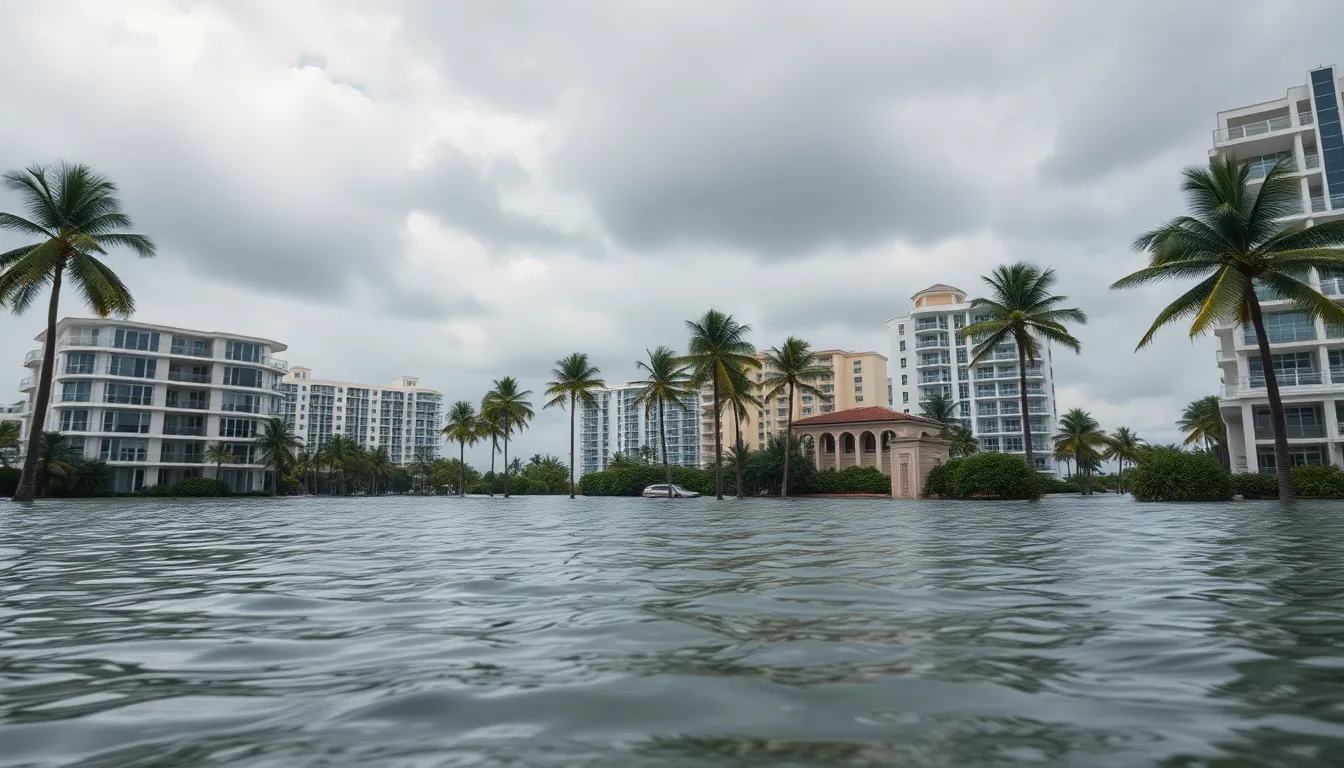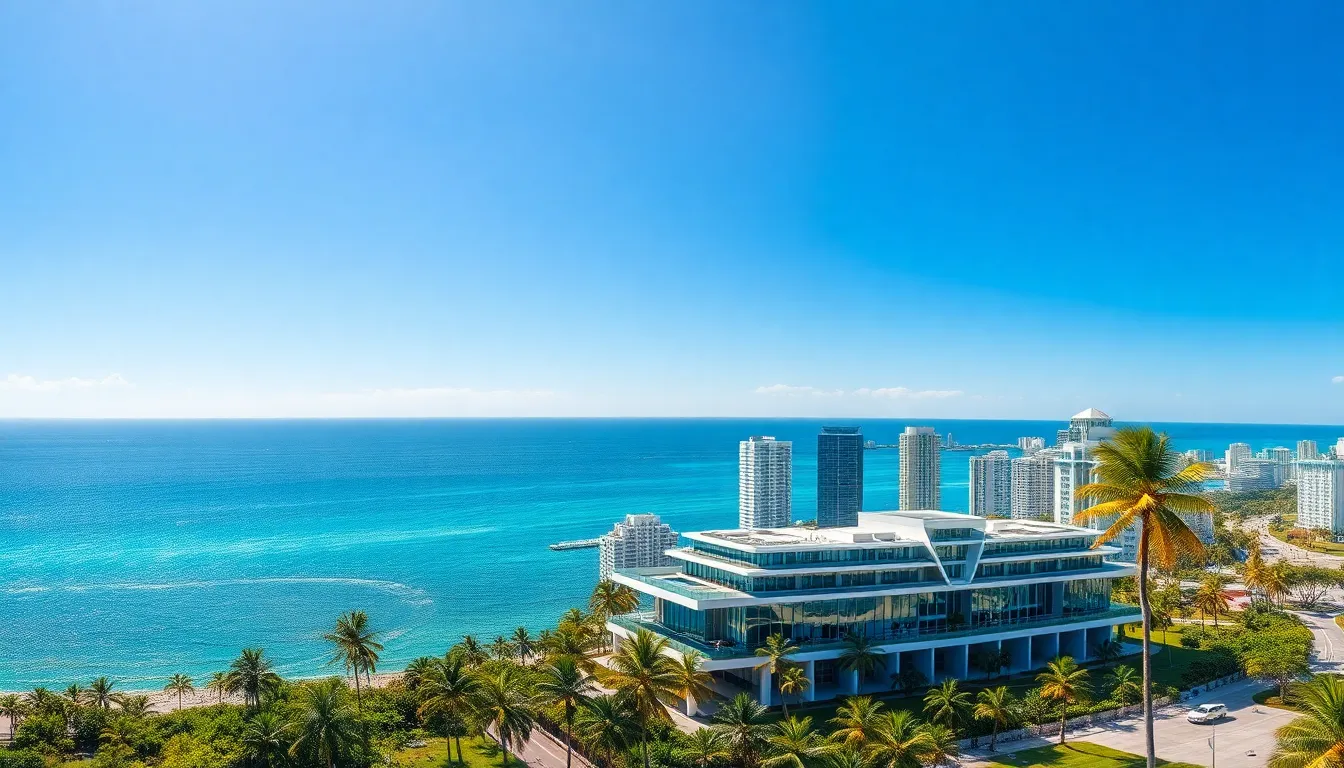Miami’s skyline is a dazzling mix of luxury condos and high-end hotels, drawing in residents and tourists alike. However, beneath this glitzy façade lies a pressing issue that’s hard to ignore: many of these opulent structures are sinking. As sea levels rise and the ground beneath shifts, the very foundations of Miami’s architectural marvels face unprecedented challenges.
The allure of these luxury properties often overshadows the environmental realities that threaten them. With climate change accelerating, the stakes are high for investors, homeowners, and city planners. Understanding the implications of this sinking phenomenon is crucial for anyone looking to navigate Miami’s real estate landscape or simply enjoy its breathtaking views. As the city grapples with these challenges, the future of its luxury condos and hotels hangs in the balance.
Table of Contents
ToggleOverview of Miami Luxury Condos Hotels
Miami’s luxury condos and hotels represent a significant part of the city’s real estate landscape. The area boasts over 30,000 luxury condo units, contributing to the vibrant, upscale environment. Iconic high-rises, such as the Porsche Design Tower and the Continuum, attract affluent residents and tourists alike.
Properties often feature amenities like private pools, lavish spas, and gourmet dining. Exotic waterfront views enhance their appeal, making these condos and hotels a prime choice for those seeking opulence. The luxury market continues to attract investments, generating substantial economic activity within the city.
However, underlying environmental issues raise concerns regarding their long-term viability. The sinking trend poses a risk to property value and safety as rising sea levels and increased flooding threaten these structures. Data from the National Oceanic and Atmospheric Administration predicts sea levels may rise by 1 to 2.5 feet by 2050, intensifying risks for beachfront properties.
City planners and architects face challenges in addressing these risks while meeting luxury demands. Innovative engineering methods, including elevated structures and improved drainage systems, become crucial in maintaining the integrity of Miami’s luxury real estate portfolio. Understanding these dynamics is essential for stakeholders invested in the future of Miami luxury condos and hotels.
The Issue of Sinking Condos

Miami’s luxury condos face significant risks due to factors contributing to sinking issues. These challenges come from both environmental and geological sources, affecting the stability of these high-end properties.
Causes of Sinking
- Rising Sea Levels: The National Oceanic and Atmospheric Administration projects a sea level rise of 1 to 2.5 feet by 2050, increasing flooding risks for coastal properties.
- Ground Subsidence: Land in Miami is prone to sinking due to the geological composition, which includes porous limestone. This natural process threatens integrity.
- Increased Rainfall: Climate change causes erratic weather patterns, resulting in more frequent heavy storms that exacerbate flooding and contribute to structural instability.
- Development Practices: Urbanization often overlooks environmental impact assessments, leading to insufficient drainage systems and inadequate infrastructure support.
Impact on Residents and Investors
- Property Values: Sinking risks diminish property values, causing fluctuations in the luxury real estate market and making investments less appealing.
- Insurance Costs: Flood-related risks increase insurance premiums for homeowners and investors, complicating financial calculations and commitments.
- Safety Concerns: Structural integrity issues raise safety concerns for residents, prompting fears of potential evacuations or costly repairs.
- Market Stability: The overall market faces instability, as continued environmental threats deter new investments and lead to uncertainty among current property owners.
Notable Case Studies
Several luxury condos in Miami are experiencing notable sinking issues, illustrating the pressing challenges faced by this segment of the real estate market. Stakeholders are closely monitoring these cases to assess long-term implications.
Specific Condos Affected
- The Reef Line: This luxury condo complex, located in Miami Beach, shows signs of significant sinking due to rising sea levels. A comprehensive study measured subsidence rates, indicating a downward trend of approximately 3 inches over five years.
- Ocean Tower I: Situated on Key Biscayne, Ocean Tower I encountered water intrusion issues linked to increased flooding. Experts suggest the structure has experienced subsidence of about 2.5 inches since construction, raising concerns about structural integrity.
- Diplomat Residences: This high-end property in Hollywood, Florida, documented rising dampness in basements, attributed to groundwater seepage. Surveys show a gradual sinking of nearly 2 inches over the last decade, leading to potential risks for residents.
Responses from Developers
- Elevated Foundations: Developers are increasingly adopting elevated foundation strategies for new projects. Elevated platforms can mitigate flood exposure, demonstrated in recent constructions like the Porsche Design Tower, which raised its base by 5 feet.
- Retrofitting Efforts: Existing luxury condos are undergoing retrofitting to improve resilience. The Continuum, for example, has invested $1 million in infrastructure upgrades to enhance drainage systems and waterproofing.
- Sustainable Building Designs: Developers emphasize sustainable construction practices. Recent projects prioritize eco-friendly materials and designs, addressing environmental concerns while attracting environmentally-conscious buyers.
- Collaboration with Engineers: Engaging geotechnical engineers has become standard. Projects like the Miami Worldcenter involve specialist consultations to assess ground stability and design solutions, ensuring safer developments in vulnerable areas.
Safety Regulations and Standards
Miami’s luxury condos and hotels are subject to stringent safety regulations and standards aimed at mitigating risks associated with environmental factors. Building codes require adherence to specific engineering practices that ensure structural integrity against environmental threats, such as flooding and rising sea levels.
The Florida Building Code mandates that all new constructions incorporate elevated foundations, especially in flood-prone areas. These elevated designs help protect properties against water intrusion during extreme weather events, which have become increasingly common due to climate change.
Regular inspections play a crucial role in maintaining safety standards. Property management teams conduct thorough evaluations to assess structural conditions and address any emerging issues promptly. These inspections focus on critical areas, including foundations, drainage systems, and seawalls.
Developers must engage licensed professionals, such as geotechnical engineers, to assess soil stability and design suitable foundations. This practice ensures that structures can withstand subsidence and adverse environmental conditions.
Additionally, Miami-Dade County implements resilience strategies that include monitoring groundwater levels and adapting building practices. Projects involving retrofitting older buildings aim to enhance resilience against both sinking and climate-related threats.
Insurance regulations also impact safety standards. Insurers evaluate risks associated with environmental vulnerabilities before approving coverage, influencing design choices for new developments. Properties located in high-risk zones may face increased premiums, compelling developers to incorporate advanced safety features.
By adhering to these regulations and standards, stakeholders in Miami’s luxury real estate market strive to ensure the safety and longevity of high-end condos and hotels amid rising environmental challenges.
Future Outlook for Miami Luxury Condos
Miami’s luxury condo market faces significant challenges tied to environmental factors, yet there’s potential for adaptive strategies that ensure resilience. Developers and city planners are prioritizing innovative architectural approaches. Elevated building techniques, such as pilings and raised foundations, offer methods to mitigate risks from sea level rise and ground subsidence.
Investments in sustainable building materials and designs enhance durability against climate impacts. Technologies like permeable pavements and green roofs support effective drainage systems, reducing flood risks. Collaboration with geologists and environmental engineers strengthens site assessments, promoting informed decision-making for site selection.
Market stakeholders must pay close attention to regulatory frameworks shaping development trends. Updated building codes emphasize climate resilience, compelling new projects to incorporate adaptive measures. Property management teams have also begun utilizing smart technologies, allowing for real-time monitoring of structural integrity and environmental conditions.
Potential buyers and investors now prioritize sustainability and safety over mere luxury. Increased awareness of environmental issues leads to higher demand for properties demonstrating resilience against climate threats. Luxury condos offering innovative features, such as energy-efficient systems and flood-resistant designs, may maintain their value better in an uncertain market.
Continued engagement with local communities and organizations fosters transparency and collaboration in addressing these challenges. As knowledge around climate impact grows, stakeholders in Miami’s luxury condo sector are likely to adapt, ensuring the market’s sustainability and appeal in the face of evolving environmental realities.
Miami’s luxury condos and hotels face significant challenges as environmental factors threaten their stability. The rising sea levels and ground subsidence create pressing concerns for investors and homeowners alike. As the city adapts to these realities, innovative engineering solutions and sustainable practices are becoming essential for safeguarding these opulent properties.
With a focus on resilience and safety, stakeholders are beginning to prioritize developments that can withstand the impacts of climate change. This proactive approach not only addresses immediate risks but also positions Miami’s luxury real estate market for a more sustainable future. As awareness grows, the demand for properties that embody these principles is likely to increase, shaping a new era for luxury living in this vibrant city.



